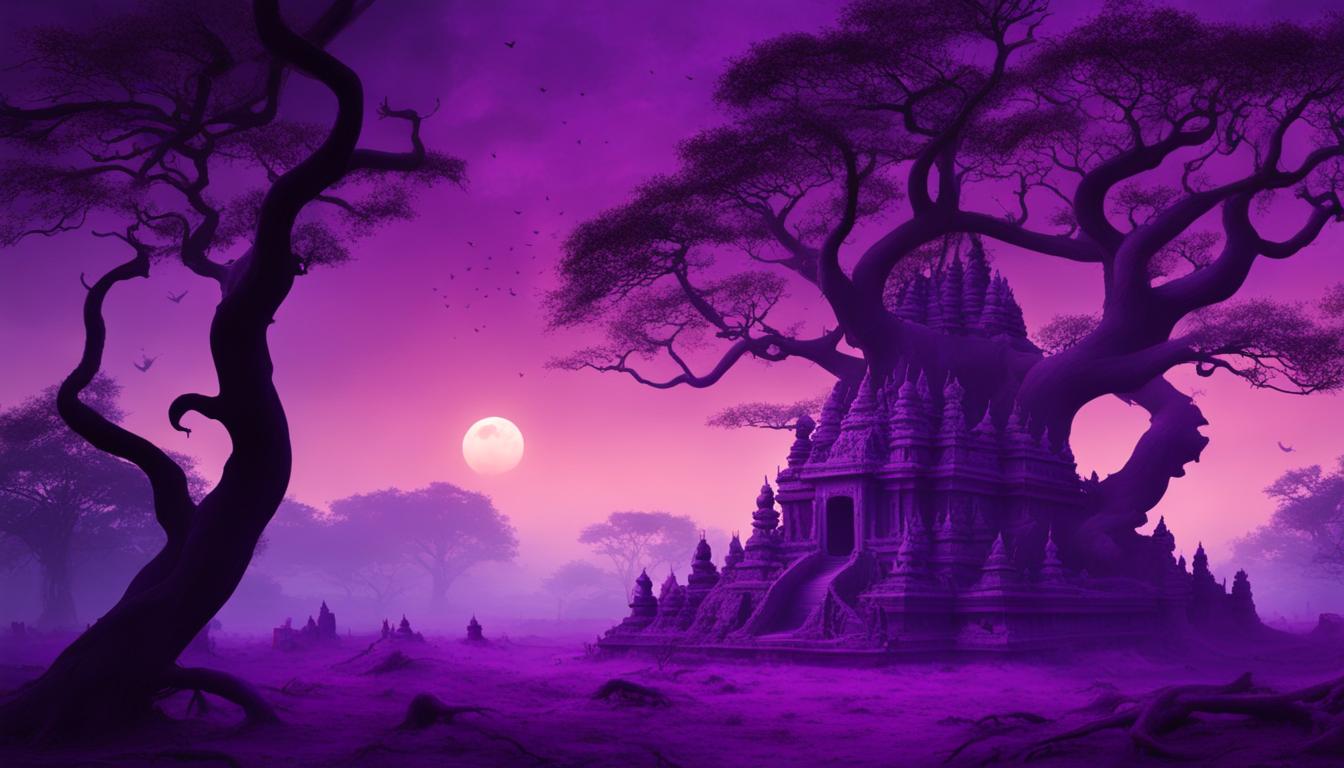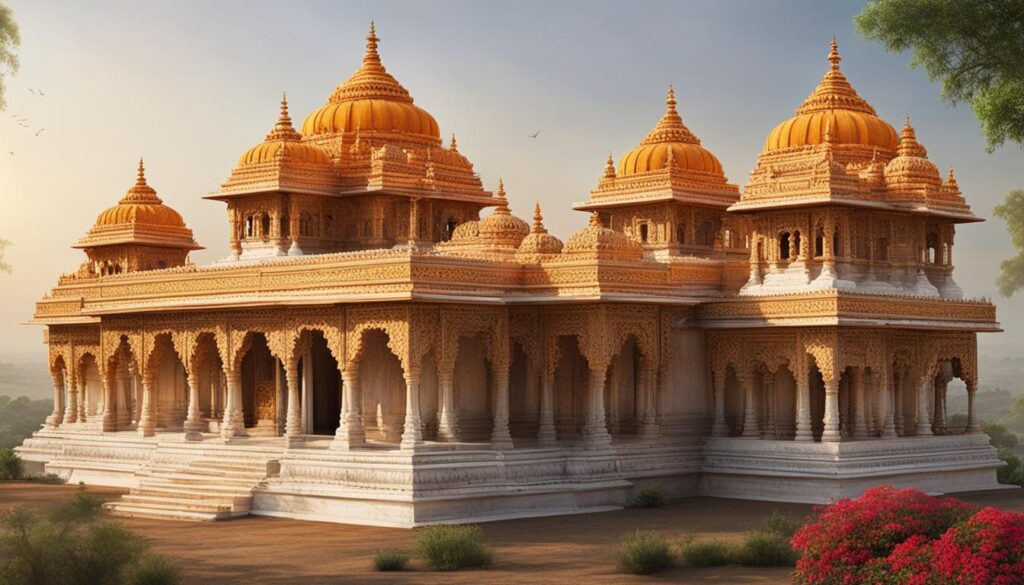
Explore the 3 Weirdest Places in India Now!
India is a land of wonders, where you can find extraordinary experiences in every corner. If you’re eager to discover the offbeat and peculiar, India won’t disappoint you. From the breathtaking landscapes of Kashmir to the southern charm of Kanyakumari, and the hidden gems of Changlang and Kutch, the country offers a plethora of weird and wonderful destinations. Embark on a journey to explore some weirdest places in india that defy expectations and challenge stereotypes!
Key Takeaways:
- India is home to some of the most weirdest places and peculiar landmarks.
- From the Toilet Museum in New Delhi to the Karni Mata Temple in Rajasthan, these places offer unique experiences that will leave you fascinated.
- Shani Shingnapur in Maharashtra is a place known for its belief in the protective powers of Lord Shani.
- The Karni Mata Temple in Rajasthan is famous for its worship of rats, considered to be the reincarnation of Karni Mata’s sons.
- New Lucky Restaurant in Gujarat offers an unforgettable dining experience, where coffins are part of the restaurant’s design.
Toilet Museum New Delhi
The Toilet Museum in New Delhi is a fascinating destination that offers a unique glimpse into the historic evolution of toilets. From 2500 BC to the present day, this museum showcases the development and transformation of these essential amenities.
The museum is divided into three sections – ancient, medieval, and modern – allowing visitors to explore the diverse facets of toilets throughout history. In the ancient section, you’ll find intriguing artifacts such as privies and chamber pots, providing a window into the sanitation practices of early civilizations.
The medieval section presents a range of toilet furniture, including ornately carved and painted urinals and commodes. These beautifully crafted pieces demonstrate the attention to detail given to even the most private of spaces during bygone eras.
The modern section of the museum traces the evolution of toilets from the 18th century to the present day. Here, you’ll encounter innovative designs, such as bidets and water closets, that have revolutionized sanitation practices worldwide.
The Toilet Museum also sheds light on the social customs and prevailing sanitary conditions associated with toilets. Through its displays, it educates visitors about efforts by authorities to improve sanitation and hygiene standards.
The museum showcases unique toilet designs used by different cultures throughout history. For example, you can discover the mobile commode in the shape of a treasure chest, which the English used during camping and hunting. Additionally, you’ll learn about toilets made of gold and silver that were once used by Roman emperors.
By visiting the Toilet Museum in New Delhi, you can gain a deeper appreciation for the historic significance of toilets and how they have evolved over time. It’s an informative and eye-opening experience that highlights the importance of sanitation in human civilization.
Plan Your Visit
If you’re interested in exploring the Toilet Museum in New Delhi, make sure to check its operating hours and any relevant entry fees. It’s advisable to allocate sufficient time for your visit to fully appreciate the exhibits and learn about the intriguing history of toilets.
Opening Hours:
- Monday to Saturday: 10:00 AM – 5:00 PM
- Sunday: Closed
Admission Fees:
- Adults: 300 INR
- Children (under 12 years): Free
| Section | Highlights |
|---|---|
| Ancient | Privies, chamber pots, sanitation arrangements during early settlements like the Harappa culture |
| Medieval | Ornate urinals, painted commodes, toilet furniture |
| Modern | Bidets, water closets, advancements in toilet design |
Shani Shingnapur Maharashtra
Shani Shingnapur in Maharashtra is a religious place believed to be protected by Lord Shani, known for his powerful and protective powers. According to folklore, this village is considered safe from theft and trespassing due to the divine influence of Lord Shani. The temple complex at Shani Shingnapur is steeped in history and traditions, captivating the hearts of devotees and tourists alike.
One of the most fascinating aspects of Shani Shingnapur is the belief that the deity, Lord Shani, is self-emerged and resides in a black stone. This unique attribute adds to the mystique surrounding the temple and attracts visitors from far and wide.
Until March 30, 2016, women were not allowed to enter the inner sanctum of the temple, making it a subject of controversy within the community. However, since the temple’s rules were modified, women are now allowed to participate fully in the religious activities of this sacred site.
Shani Shingnapur stands out from other temples due to its extraordinary lack of doors and locks. The entire village is under the open sky, reflecting the remarkable trust and faith placed in the protective powers of Lord Shani. This absence of physical barriers symbolizes the harmony and unity among the village residents.
On Amavasya, which is the no moon day, Shani Shingnapur witnesses a massive influx of devotees who come to offer prayers and seek blessings. These auspicious days often see thousands of people flocking to the temple, creating an atmosphere of devotion and spirituality.
Experience the divine ambiance and the powerful presence of Lord Shani at Shani Shingnapur Maharashtra, and immerse yourself in the rich folklore and protective powers that surround this extraordinary place.
Karni Mata Temple Rajasthan
The Karni Mata Temple in Rajasthan is a religious site known for its unique ritual of rat worship. According to local beliefs and regional religious texts, Karni Mata is believed to be the goddess and the rats residing in the temple are considered the reincarnation of her sons. The temple, also known as the Temple of Rats, is home to over 25,000 black rats, known as Kabbas, which are revered and protected.
Visitors to the Karni Mata Temple often witness rats freely roaming around the premises, including drinking milk from a huge bowl. Despite their large number, the temple has never experienced a case of plague, which is seen as a miraculous phenomenon by the devotees.
The temple holds grand fairs during the Navratri festival, attracting devotees from different parts of the country. Navratri is a nine-night Hindu festival celebrated with great enthusiasm, and these fairs offer a unique blend of religious devotion, cultural performances, vibrant markets, and delectable food.
| Temple Name | Location | Type | Number of Rats |
|---|---|---|---|
| Karni Mata Temple | Rajasthan | Religious | 25,000+ |
These grand fairs during Navratri are a testimony to the rich cultural heritage of Rajasthan and provide a unique opportunity for devotees and travelers to immerse themselves in the vibrant traditions of the region.
The Legend Behind Rat Worship
“According to legend, Karni Mata’s stepson, Laxman, drowned in a pond while attempting to drink water. Karni Mata implored Yama, the god of death, to revive him, but Yama refused. Karni Mata then proclaimed that none of her family members, including Laxman, would be subject to the cycle of death and rebirth but instead reincarnated as rats. This legend gives rise to the belief that the rats in the temple are the descendants of Karni Mata’s family.”
The Karni Mata Temple in Rajasthan continues to fascinate visitors with its unusual and intriguing rat worship rituals, making it a must-visit for those seeking a unique spiritual experience. The temple’s architectural beauty, rich cultural heritage, and the presence of thousands of rats create an atmosphere that is both awe-inspiring and captivating.

Experience the allure of the Karni Mata Temple in Rajasthan, where devotion and reverence intertwine with the extraordinary presence of thousands of black rats.
New Lucky Restaurant Gujarat
The New Lucky Restaurant in Gujarat offers a truly unique dining experience that you won’t find anywhere else. Located amidst a Kabristan (Muslim cemetery) with 26 graves, this restaurant lets customers dine alongside coffins. The establishment, which has been serving customers for over 60 years, stands as a testament to the owner’s unconventional vision.
Instead of removing or covering the coffins, the owner decided to incorporate them into the restaurant’s design. As you sit down to enjoy your meal, you’ll find yourself in the company of the deceased, adding an eerie yet intriguing ambiance to your dining experience.
Despite the unconventional setting, the New Lucky Restaurant is known for its delicious and affordable food. It has become a popular attraction for both locals and tourists who are looking for more than just a meal. Whether you’re seeking a unique adventure or simply curious to explore, dining at New Lucky Restaurant in Gujarat will surely be an unforgettable experience.
FAQ
What is the Toilet Museum in New Delhi?
The Toilet Museum in New Delhi is a unique museum that showcases the historic evolution of toilets from 2500 BC to the present day. It features rare collections of privies, chamber pots, toilet furniture, bidets, and water closets. The museum is divided into three sections – ancient, medieval, and modern – and provides insights into toilet-related social customs, sanitary conditions, and unique toilet designs used throughout history.
What is the significance of Shani Shingnapur in Maharashtra?
Shani Shingnapur is a religious place in Maharashtra believed to be protected by Lord Shani. According to folklore, the region is considered safe from theft and trespassing due to the protective powers of Lord Shani. The temple complex is home to numerous traditions and is unique in that it is under the open sky with no doors or locks. Until 2016, women were not allowed to enter the inner sanctum of the temple.
What is the Karni Mata Temple in Rajasthan known for?
The Karni Mata Temple in Rajasthan is known for its unusual ritual of worshiping rats. It is believed that the temple is the abode of Karni Mata, and the rats residing in the temple are the reincarnation of her sons. The temple is home to over 25,000 black rats called Kabbas. Visitors to the temple often witness rats moving freely throughout the premises, including drinking milk from a huge bowl. The temple holds grand fairs during the Navratri festival.
What is unique about the New Lucky Restaurant in Gujarat?
The New Lucky Restaurant in Gujarat offers a unique dining experience where customers can dine alongside coffins. The restaurant is located on a Muslim cemetery and incorporates the coffins into its design. Customers can sit right next to the coffins while enjoying delicious and affordable food. The site has become a popular attraction for both locals and tourists looking for a one-of-a-kind dining experience.

Leave a Reply